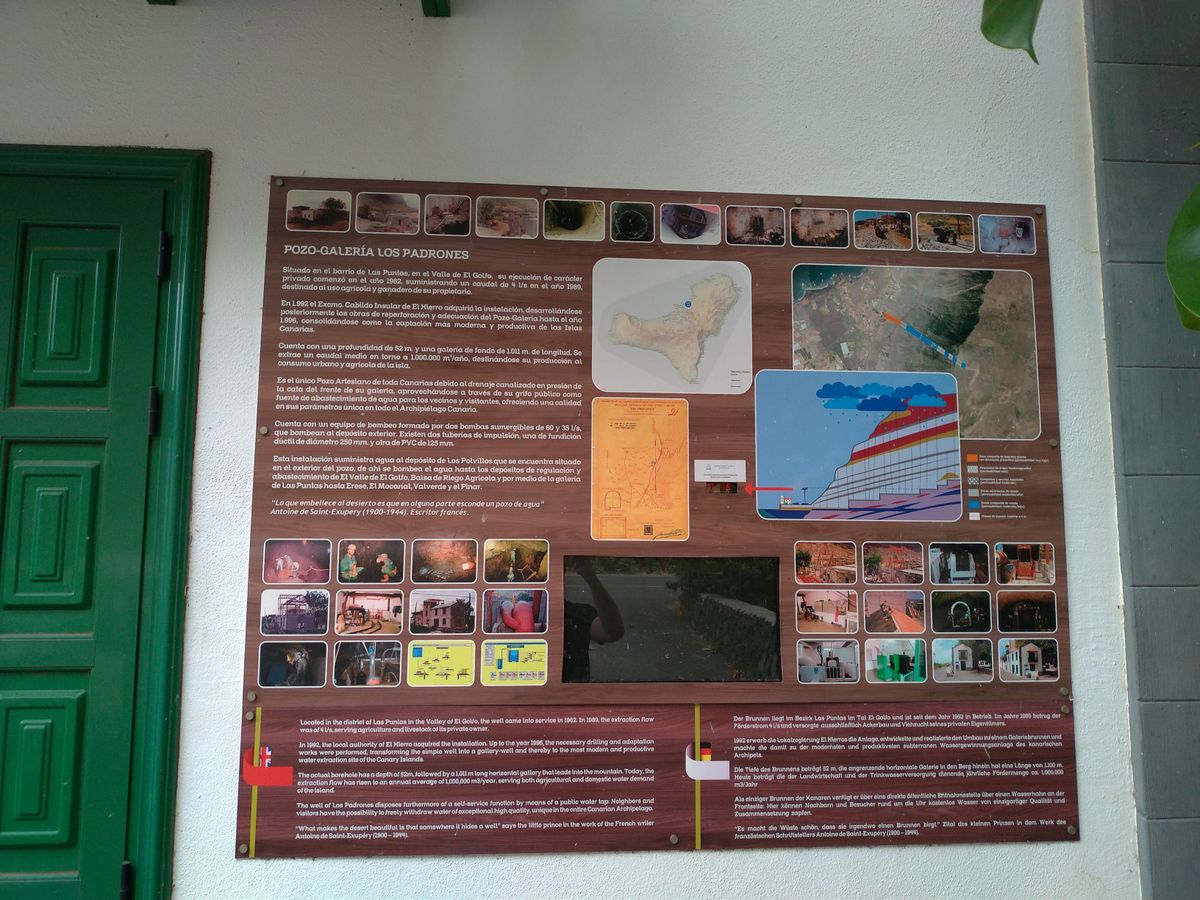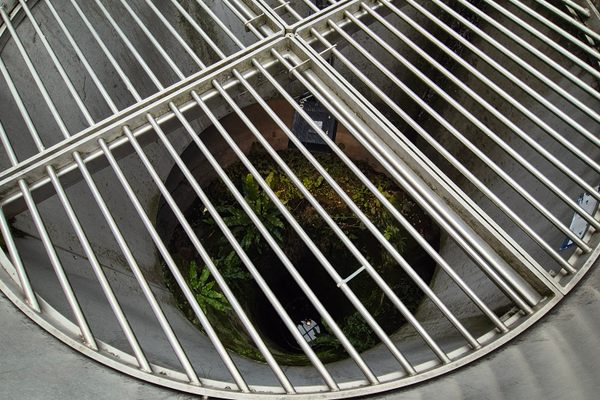About
On many islands, water is a valuable commodity even though the land is literally surrounded by it. But fresh water is needed for drinking, bathing, and irrigating crops. The amount of water needed quickly adds up—what happens when you run out?
On the Canary Islands, freshwater is obtained in several ways: rainfall, saltwater desalination, and water mines (like the Pajarito water tunnels in La Palma). The last option has been the go-to for the last few decades due to its relative ease. All you really need to do is dig a horizontal tunnel into the mountain and catch the water that seeps down from above.
El Hierro has one main water tunnel, the well of Los Padrones. The 52-meter well was dug privately in the early 1960s and was used mainly for irrigation. The surrounding area continues to be one of the main farming regions on the island today. In 1992, the island council bought the well and decided to develop it to maximize the water extraction potential. The well was redrilled and a large horizontal gallery of just over one kilometer was added over the course of four years. At the time this was the most modern water intake on the Canary Islands, capable of extracting roughly one billion liters of water per year
What makes the well unique is that it installed a tap at the front of its facility to offer free water to all those living near it. Water from the well is pumped into the Los Polvillos reservoir, which supplies water to El Valle de El Golfo, the raft of agricultural irrigation, and through the Las Puntas gallery to Erese, El Mocanal, Valverde, and El Pinar.
The water from the tap can be drunk, but it is not filtered and contains many heavy minerals that are not really good for you or the taste. Those who want to try the water are advised to buy some bottles in the shops.
Related Tags
Know Before You Go
The exterior of the well is freely accessible. To go down you need to know someone.
Community Contributors
Added By
Published
July 30, 2021




























